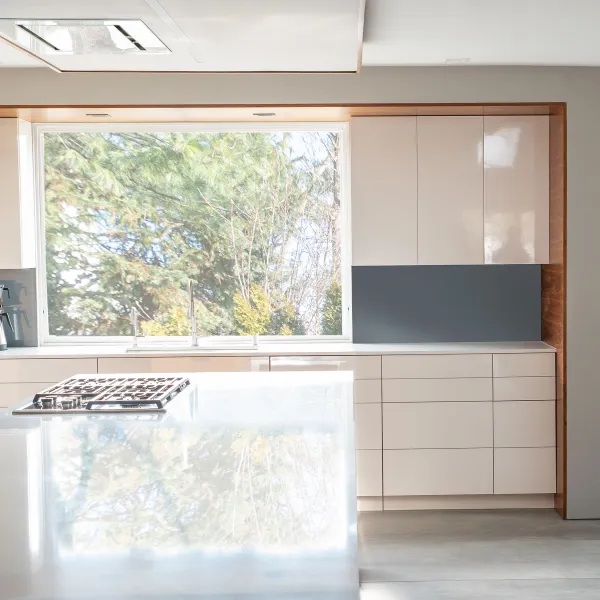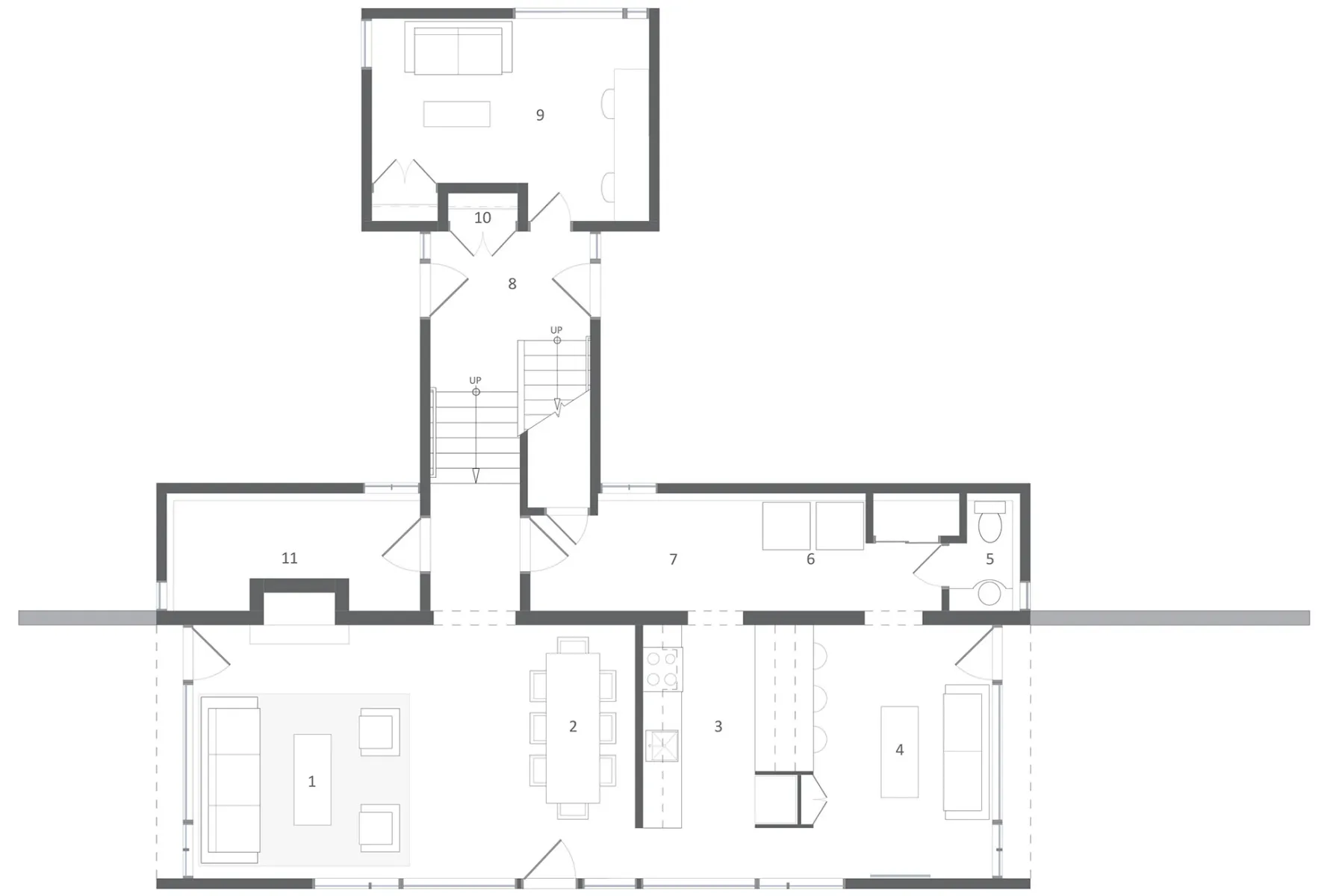MODERN ARCHITECTURE
Modernism is not a specific style, but rather an international idea dating from World War II and reflective of the post war period. Some of its guiding principles include simplicity of form, open floor plan, blurring the distinction between interior and exterior spaces, and site specific design.
Lincoln Modernism
Lincoln The Japan Connection
studio J2
studio J2 architects is located in Lincoln and enjoys building on and reinventing its tradition of Modernism. The restoration/renovation of a Modernist residence designed by Henry Hoover and now used as the town’s Unitarian Universalist Church parsonage, is one example of their residential work. John and Jennifer were fortunate to have been sent on a client sponsored research trip to Tokyo, Osaka and Kyoto Japan in 2013.They were struck by the exquisite attention to detail and complete manifestation of beauty in simplicity they found there. They understood why a road they visited in Kyoto was described in a guidebook as “the most beautiful street in the world”. These and other local and international experiences have helped to shape their core design principles which they use to create architecture that reveals the distinct spirit of its occupants and place.


